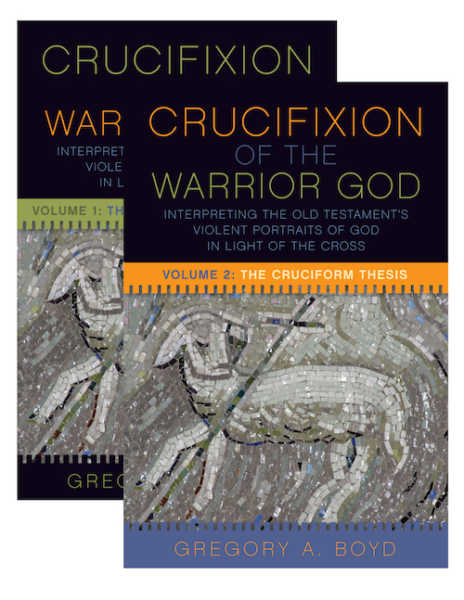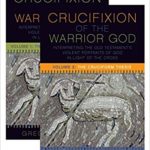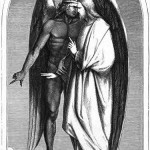We run our website the way we wished the whole internet worked: we provide high quality original content with no ads. We are funded solely by your direct support. Please consider supporting this project.

Crucifixion of the Warrior God Update
Did you know that authors generally don’t have much say-so about the cover art for their books? It’s considered part of the marketing, so the author may or may not like how it ends up looking. I’ve had a few book covers that made me scratch my head. (I won’t tell you which ones, but it would be fun to hear all of your guesses.) That being said, I’m thrilled with these covers, and I wanted to share them with all of you. So exciting!
Here’s the Fortress Press description:
A dramatic tension confronts every Christian believer and interpreter of Scripture: on the one hand, we encounter images of God commanding and engaging in horrendous violence: one the other hand, we encounter the non-violent teachings and example of Jesus, whose loving, self-sacrificial death and resurrection is held up as the supreme revelation of God’s character in the New Testament. How do we reconcile the tension between these seemingly disparate depictions? Are they even capable of reconciliation? Throughout Christian history, many different answers have been proposed, ranging from the long-rejected explanation that these contrasting depictions are of two entirely different ‘gods’ to recent social and cultural theories of metaphor and narrative representation.
The Crucifixion of the Warrior God takes up the dramatic tensions between depictions of divinely sanctioned violence and the message of peace centering the New Testament. Over two volumes, Gregory A. Boyd argues that we must take seriously the full range of Scripture and the centrality of the crucified and risen Christ as God’s supreme revelation. Developing a theological interpretation of Scripture involves what Boyd calls a cruciform hermeneutic. This reading leads us into the proper way of understanding the character of God, revealing God as loving, sacrificial, and subverting violence.
Category: General
Tags: Crucifixion of the Warrior God, Cruciform Theology
Related Reading

Reviewing the Reviews: Tom Belt (Part 2)
In my previous post I reviewed Tom’s critical review of volume 1 of CWG, and in this post I’d like to do the same for his critical review of volume 2. As he did in his review of volume I, Tom begins with some praises and points of agreement. He thinks my quest to discern “what…

Isn’t the Resurrection the Ultimate Revelation of God? (podcast)
Greg considers the relationship between Christ’s death and resurrection. http://traffic.libsyn.com/askgregboyd/Episode_0744.mp3

What Does Spiritual Warfare Have To Do with the Cross?
Last week, we covered a few posts on the nature of the Atonement and the Christus Victor view. The following continues this theme, specifically looking the motif of spiritual warfare and how it relates to Christ’s work on the cross. This is an adaptation from Greg’s article in The Nature of the Atonement: Four Views. …

Do We Read Bible-Violence to Children? (podcast)
Greg on children and Bible violence. Episode 658 http://traffic.libsyn.com/askgregboyd/Episode_0658.mp3

Early Anabaptists and the Centrality of Christ
In a previous post, I wrote about the Christocentric interpretation of the Scriptures espoused by the magisterial Reformers, specifically Luther and Calvin. Their hermeneutic was focused on the work and the offices of Christ, but in my opinion the Anabaptists surpasses their approach because it focused on the person of Christ with an unparalleled emphasis…

When God Endorsed Polygamy
We often find God acting as if he supports things we know, by other means, that he does not. For example, though his ideal was monogamy, it’s clear in the biblical narrative that, once God decided to permit men to acquire multiple wives and concubines, he was not above bearing the sin of his people…
